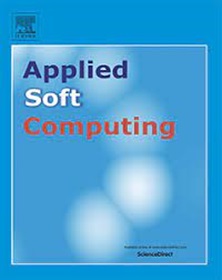基于自适应贝叶斯模糊聚类的脑肿瘤自动分割与分类
IF 7.2
1区 计算机科学
Q1 COMPUTER SCIENCE, ARTIFICIAL INTELLIGENCE
引用次数: 0
摘要
恶性细胞在大脑中不受控制的生长被称为脑瘤。在早期发现脑部肿瘤后,快速的治疗反应增加了患者生存的机会。充分的肿瘤分类和分割对治疗计划和最佳评估是必要的。定期检测和鉴定将是理想和有益的。近年来,深度学习的引入极大地影响了医学成像系统的设计。因此,本文提出了一种创新的脑肿瘤分类模型,解决了传统方法计算量大、准确率低等缺点。首先,从在线基准中获取后续流程所需的图像。此外,将获取的图像提供给分割程序,其中利用自适应贝叶斯模糊聚类(ABFC)对异常进行分割。此外,在分割过程中采用了改进的欧亚牡蛎捕获优化器(IEOO),对ABFC技术中的参数进行了调整,提高了分割性能。对分割后的图像进行长短期记忆多尺度残差注意网络(MRAN-LSTM)分类。最后,通过与传统模型的对比,仿真验证了所实现的脑肿瘤分割分类方法的成功率。本文章由计算机程序翻译,如有差异,请以英文原文为准。
An automated brain tumor segmentation and classification using adaptive Bayesian fuzzy clustering
An uncontrolled growth of malignant cells in the brain is known as a brain tumor. Rapid treatment response follows an early identification of tumors in the brain that increases the chance of patient survival. Adequate tumor classification and segmentation are necessary for treatment planning and best evaluation. It would be ideal and beneficial to have regular detection and identification. The design of medical imaging systems has been greatly influenced by the introduction of deep learning in recent years. Hence, an innovative brain tumor classification model is suggested in this work that resolves the drawbacks of traditional methods such as computational complexity, and low accuracy. At first, the necessary images are garnered from the online benchmark for the subsequent process. Further, the garnered images are given to the segmentation procedure, where an Adaptive Bayesian Fuzzy Clustering (ABFC) is utilized for segmenting the abnormalities. Moreover, an Improved Eurasian Oystercatcher Optimizer (IEOO) is adopted in the segmentation process for tuning the parameters in the ABFC technique, which increases the performance. The segmented images are subjected to the Multi-scale Residual Attention Network with Long Short Term Memory (MRAN-LSTM) layer for classifying the brain tumors. Finally, the simulations are done to verify the success rate of the implemented brain tumor segmentation and classification approach by contrasting it with traditional models.
求助全文
通过发布文献求助,成功后即可免费获取论文全文。
去求助
来源期刊

Applied Soft Computing
工程技术-计算机:跨学科应用
CiteScore
15.80
自引率
6.90%
发文量
874
审稿时长
10.9 months
期刊介绍:
Applied Soft Computing is an international journal promoting an integrated view of soft computing to solve real life problems.The focus is to publish the highest quality research in application and convergence of the areas of Fuzzy Logic, Neural Networks, Evolutionary Computing, Rough Sets and other similar techniques to address real world complexities.
Applied Soft Computing is a rolling publication: articles are published as soon as the editor-in-chief has accepted them. Therefore, the web site will continuously be updated with new articles and the publication time will be short.
 求助内容:
求助内容: 应助结果提醒方式:
应助结果提醒方式:


